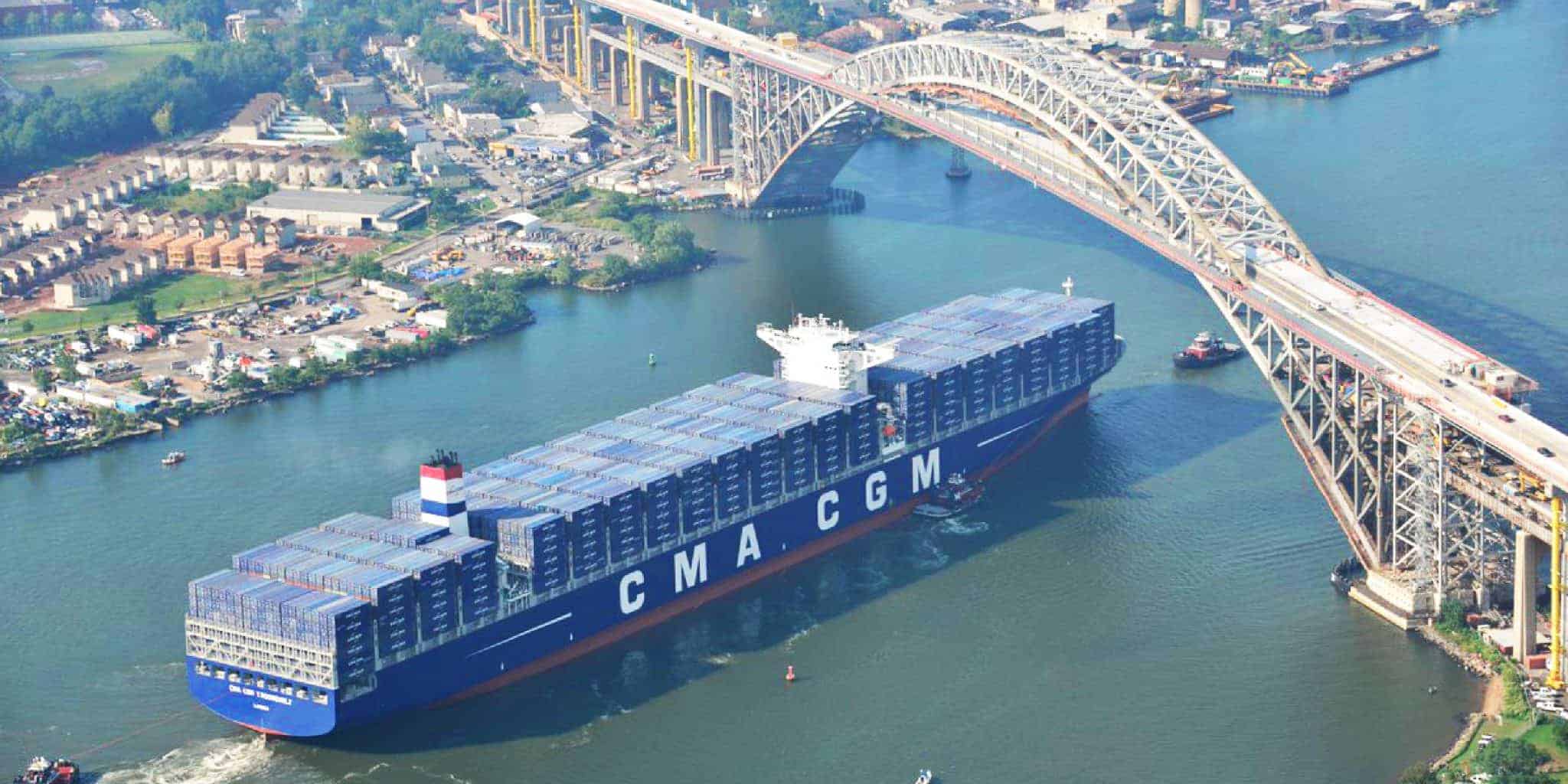6 ways the Bayonne Bridge project has fueled business at Port of NY/NJ

BAYONNE — Port Authority officials say the completion of the Bayonne Bridge Navigational Clearance Project is helping the Port of New York and New Jersey set new records for volume records, “shattering” the existing highs established two years ago.
As a result of the project, which saw the Bayonne Bridge raised from 151 feet to 215 feet to allow larger ships access to the port’s marine facilities in Newark, Elizabeth and Staten Island, cargo volume was up 5.3 percent from 2015, when the previous record as set.
“The investment we made to raise the Bayonne Bridge is clearly paying dividends by driving up cargo volumes and significantly boosting the jobs and economic activity the port generates for the region,” said Port Authority Executive Director Rick Cotton. “Our goal moving forward is to continue to work with all port stakeholders to efficiently and effectively handle greater volumes of cargo destined for our port.”
While officials say the “Raise the Roadway” project is set to be fully completed in 2019, here are six signs that business is booming at the Port of New York and New Jersey since the Bayonne Bridge was raised in June:
2017 was port’s busiest year on record
The port handled 6,710,817 TEUs — a 20-foot-long cargo container that can be transferred between different modes of transportation — in 2017, a 5.3 percent increase from 6,371,720 TEUs in 2015, according to port cargo data. It was a roughly 7.3 percent increase from the 6,251,953 TEUs that entered the port in 2016.
Larger ships coming in
The navigational clearance segment of the project, completed in June 2017, allowed for much larger ships to easily travel under the bridge to port facilities in Newark, Elizabeth and Staten Island.
In September, the CMA CGM Thedore Roosevelt, a cargo ship four times larger than the Statue of Liberty with the capacity for more than 14,400 TEUs, sailed under the newly elevated bridge on its maiden voyage to the United States.
Monthly increases in cargo
After the navigational clearance completion, the Port Authority immediately began to see cargo increases in each successive month, according to port cargo data.
In June 2017, it saw a more than 10 percent increase in its total TEUs from June 2016. Port data shows a general increase in the following months, topping off at a 15 percent increase in September 2017 compared to September 2016.
Comparatively, port data shows a general decrease in total TEUs handled monthly by the Port of New York and New Jersey in 2016 compared to 2015
In June 2016, the port saw a 5.7 percent decrease from June 2015; a 9.6 percent decrease in iny July 2016; and a near 13 percent decrease in September 2016.
More vehicles being imported
In addition to containerized cargo, the port also reported a 14.3 percent increase in vehicles imported at the port’s public berths. In 2016, the port handled 505,151 vehicles. That number jumped to 577,223 in 2017.
To attract new vehicle business to the port, the Port Authority began instituting a targeted incentive program in 2014 to attract new automobile manufacturers, providing incentives to existing ones to increase the port’s vehicle volumes.
ExpressRail on the rise
ExpressRail, the Port Authority’s ship-to-rail system serving the local marine terminals, also set a new record last year, handling 567,649 container lifts. That represented a 5.1 percent increase over the previous record of 540,149 container lifts set in 2016.
In 2017, ExpressRail accounted for 14.8 percent of all container lifts at the port.
Port remains third largest in the U.S.
Port Authority officials say this has allowed the port to “maintain its position as the third largest port in the United States,” while holding a 15.4 percent market share. It also remains the largest port on the East Coast with a 32 percent market share, officials said.
But the raise the roadway program has not been without its costs. The project has gone woefully over budget for a number of years, according to a report by the Associated Press.
The project has had a cost overrun of more than 25 percent. In December, officials with the Port Authority approved an additional $350 million to $400 million, bringing the initial $1.3 billion price tag to nearly $1.7 billion.
Nonetheless, Port Authority officials are confident in the project’s benefit to the regional economy. They say it will help build on the “significant jobs and economic activity already supported by port activities.” Despite an increase in cargo volume, they also point to a decrease in harmful emissions due to port activity.
“Our mission is to provide the infrastructure and the resources our port needs to remain a premier gateway for shippers, including the raising of the Bayonne Bridge, and shippers are taking notice and making decisions based on what we have achieved,” Port Department Director Molly Campbell said, “But for us to retain their business, we must continue to strive to do better and consistently look for ways to improve port performance.”